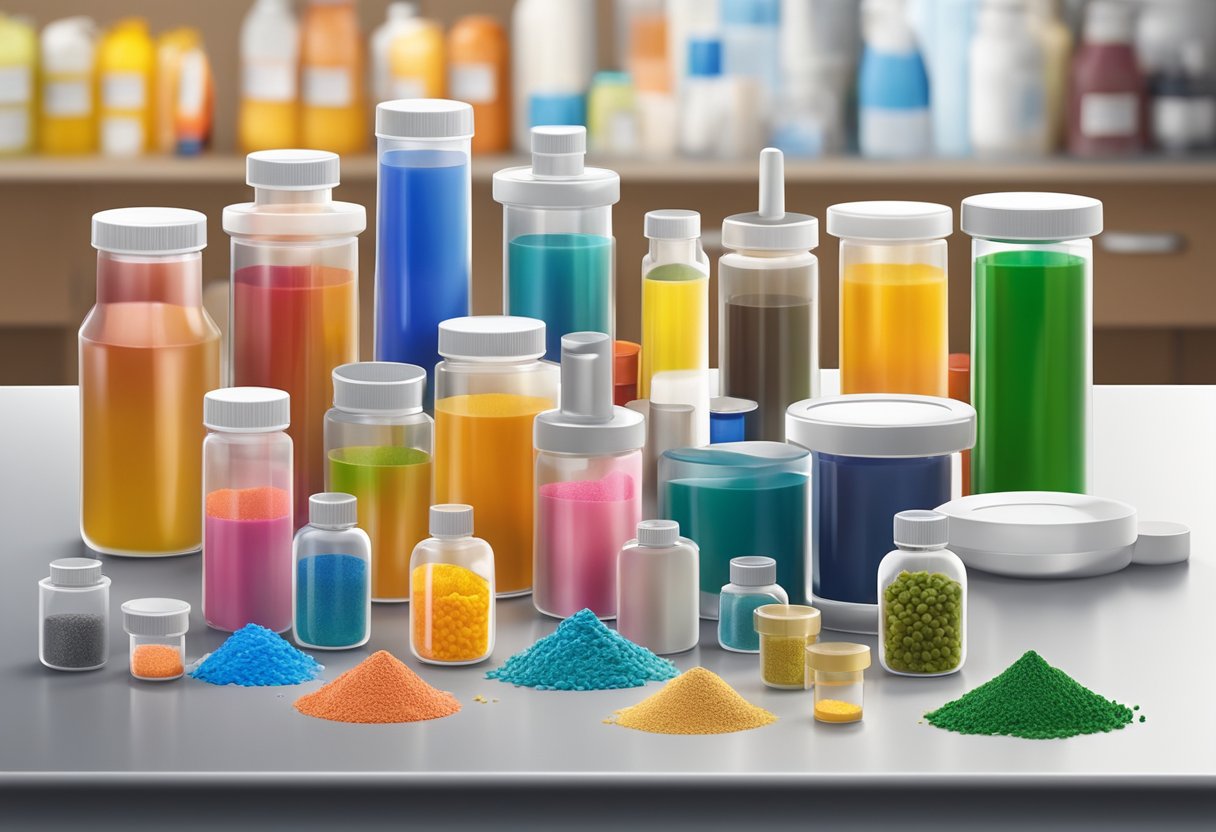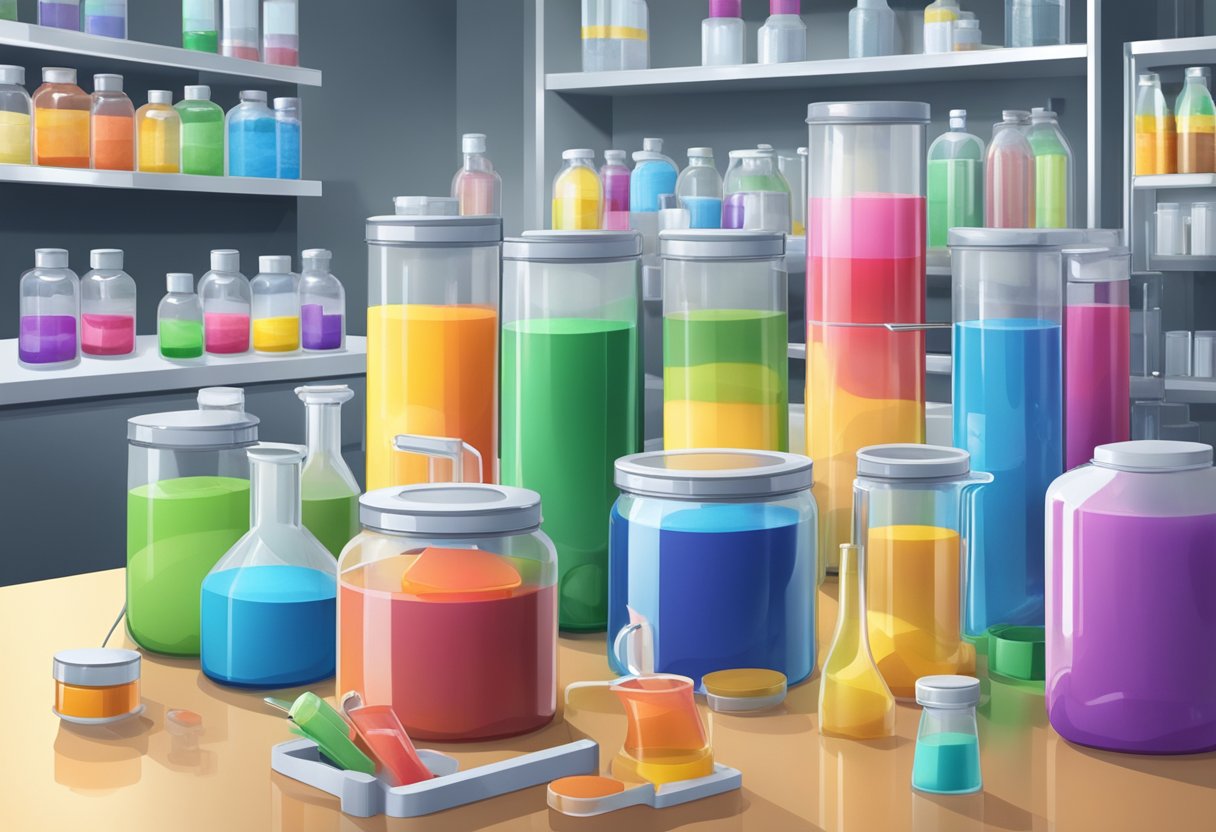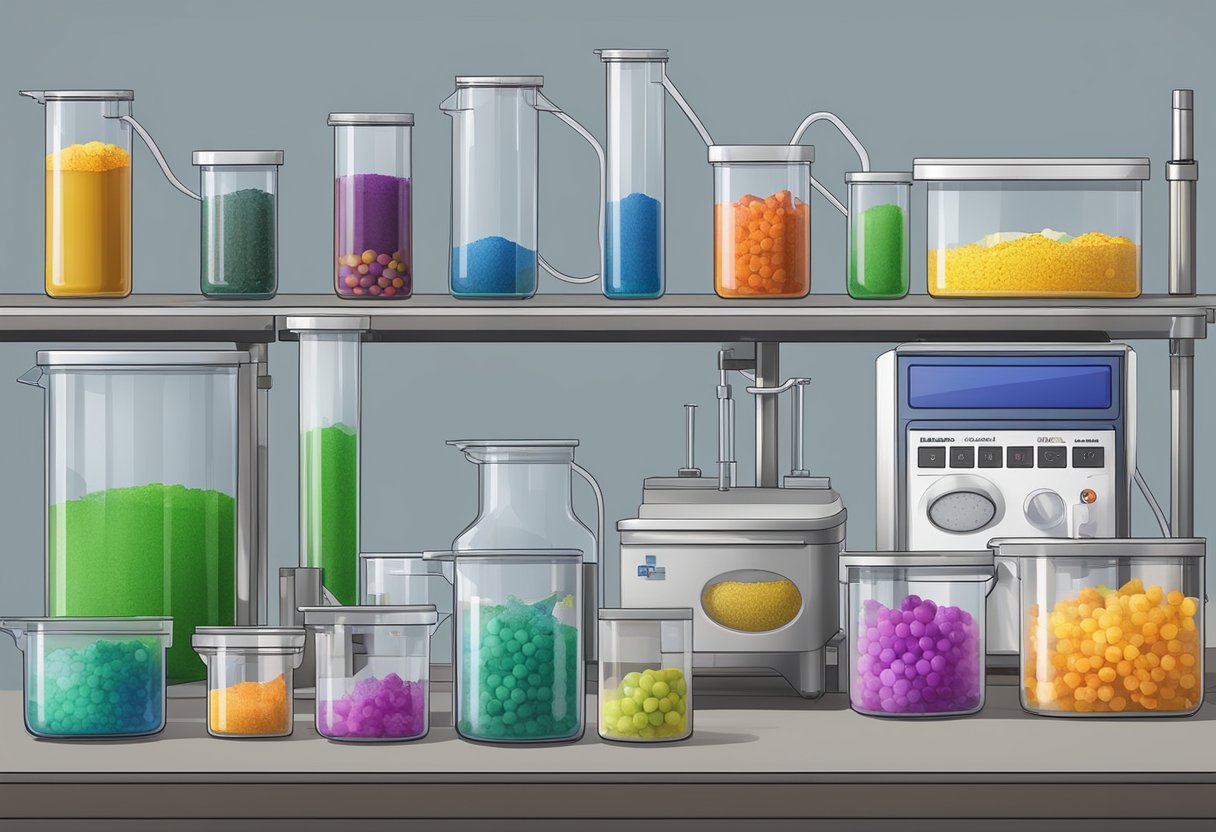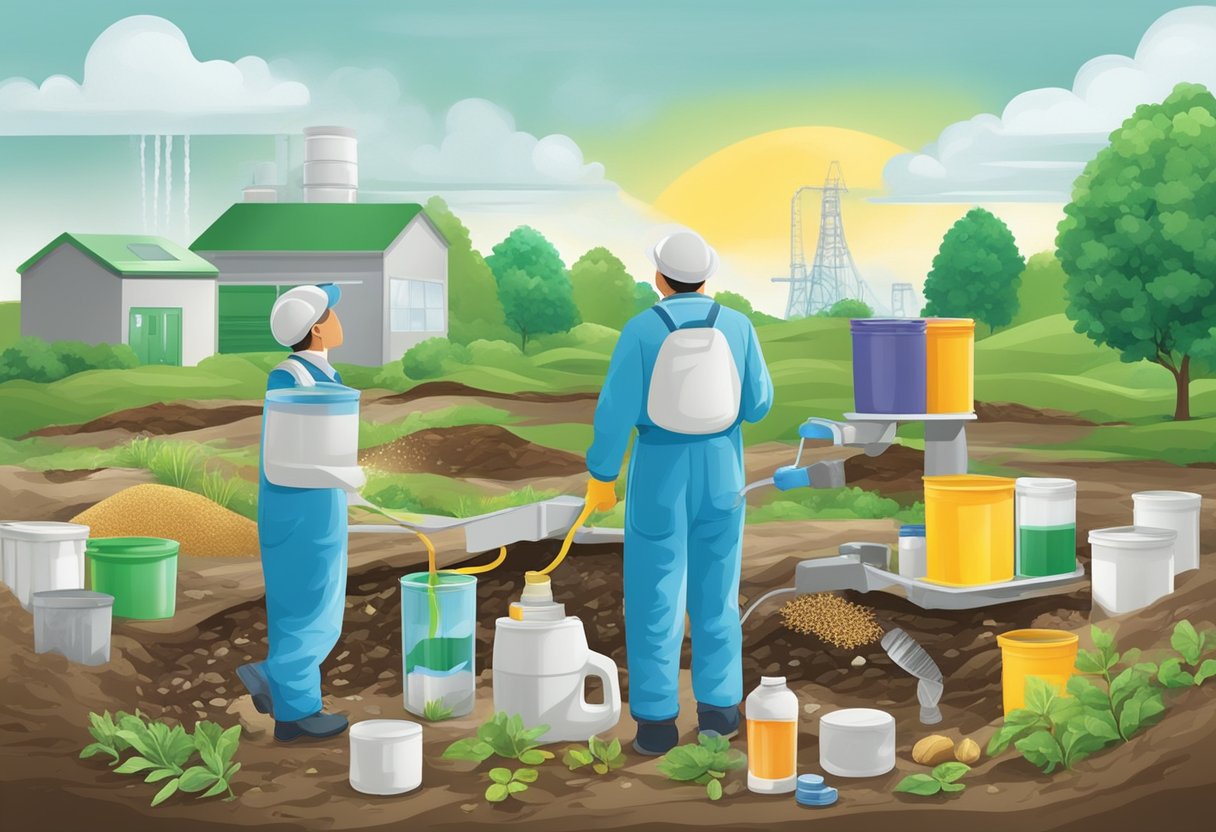Common Plastic Additives: Understanding Their Uses and Risks
19/01/2024
Common plastic additives are compounds that are added to plastics to improve their performance and properties. They are commonly used in the production of a wide range of plastic products, including packaging, toys, and electronics. There are many different types of plastic additives, each with its own unique properties and benefits.

One of the most common types of plastic additives is plasticizers. These are compounds that are added to plastics to make them more flexible and easier to work with. Some common plasticizers include phthalates, which are used in PVC products, and adipates, which are used in polyurethane products. While plasticizers can improve the performance of plastics, there are concerns about their potential impact on human health and the environment.
Another common type of plastic additive is stabilizers. These are compounds that are added to plastics to prevent them from degrading over time. UV stabilizers, for example, are used to protect plastics from the damaging effects of sunlight, while thermal stabilizers are used to prevent plastics from breaking down at high temperatures. Other types of stabilizers include antioxidants, which prevent plastics from oxidizing, and flame retardants, which make plastics more resistant to fire.
Types of Plastic Additives

Plastic additives are substances that are added to plastics to enhance their properties or to make the manufacturing process easier. There are various types of plastic additives, each with its own unique function. In this section, we will discuss the three most common types of plastic additives: plasticizers, stabilizers, and flame retardants.
Plasticizers
Plasticizers are additives that are added to plastics to make them more flexible and easier to process. They are commonly used in the production of PVC, which is a rigid plastic that becomes flexible when plasticizers are added. Some common plasticizers include phthalates, adipates, and trimellitates.
Stabilizers
Stabilizers are additives that are added to plastics to prevent them from degrading over time. This can be due to factors such as heat, light, or oxygen exposure. Stabilizers can help to prolong the life of plastics and maintain their physical properties. Some common stabilizers include antioxidants, UV absorbers, and heat stabilizers.
Flame Retardants
Flame retardants are additives that are added to plastics to reduce their flammability. They work by slowing down or preventing the combustion process. Flame retardants are commonly used in products such as electronics, furniture, and building materials. Some common flame retardants include brominated compounds, phosphorus compounds, and halogen-free compounds.
Overall, plastic additives play an important role in the properties and performance of plastics. By understanding the different types of plastic additives, manufacturers can create products that are more durable, flexible, and safe.
Function of Additives

Plastic additives are substances added to plastic to improve its performance, durability, and functionality. These additives can be classified into different categories based on their function. In this section, we will discuss the three main functions of plastic additives: enhancing plasticity, improving durability, and increasing fire resistance.
Enhancing Plasticity
Plasticity is the ability of plastic to be molded or shaped without breaking. Plasticizers are one of the most common additives used to enhance the plasticity of plastic. They are added to plastic to increase its flexibility and make it easier to mold. Plasticizers are used in a wide range of products, including toys, food packaging, and medical devices.
Improving Durability
Durability is an essential property of plastic, especially in applications where the plastic is exposed to harsh environments or extreme temperatures. UV stabilizers are additives used to protect plastic from the damaging effects of UV radiation. Antioxidants are used to prevent plastic from breaking down due to exposure to oxygen. Impact modifiers are used to improve the impact strength of plastic, making it more resistant to breakage.
Increasing Fire Resistance
Fire resistance is another critical property of plastic, especially in applications where the plastic is used in building and construction. Flame retardants are additives used to reduce the flammability of plastic and prevent it from catching fire. They work by slowing down or stopping the chemical reactions that cause plastic to burn. Halogenated flame retardants are the most commonly used flame retardants in plastic, but they are also the most controversial due to their potential environmental and health risks.
In conclusion, plastic additives play a crucial role in improving the performance and functionality of plastic. By enhancing plasticity, improving durability, and increasing fire resistance, plastic additives make it possible to use plastic in a wide range of applications. However, it is essential to use plastic additives responsibly and avoid using additives that may pose a risk to human health or the environment.
Health and Environmental Impact

Toxicity Concerns
Plastic additives are often used to improve the performance of plastic products. However, some of these additives can pose health risks to humans and animals. For example, phthalates, which are commonly used as plasticizers, have been linked to endocrine disruption and developmental problems in children.
Another common plastic additive, bisphenol A (BPA), has been shown to mimic estrogen in the body and has been linked to a variety of health problems, including cancer, obesity, and reproductive issues. While some countries have banned the use of BPA in certain products, it is still widely used in many plastic products.
Other plastic additives, such as flame retardants, have been linked to neurological and developmental problems in children, as well as cancer and other health issues in adults.
Biodegradability Issues
In addition to potential health risks, plastic additives can also have a negative impact on the environment. Many plastic additives are not biodegradable, meaning they can persist in the environment for hundreds or even thousands of years.
This can lead to a variety of environmental problems, including the accumulation of plastic waste in landfills and oceans, as well as the ingestion of plastic by wildlife. Some plastic additives can also leach into the environment, contaminating soil and water.
While some companies are working to develop biodegradable plastics and alternative additives, progress has been slow. As such, it is important for individuals to reduce their use of plastic products whenever possible and properly dispose of plastic waste to minimize its impact on the environment.
Regulatory Framework
Global Standards
The use of plastic additives is regulated by several global organizations such as the International Organization for Standardization (ISO), the European Chemicals Agency (ECHA), and the United Nations Environment Programme (UNEP). These organizations set standards for the use of plastic additives and ensure that they are safe for human health and the environment.
ISO has developed several standards related to plastic additives such as ISO 1043, which provides a standardized method for naming plastic materials, and ISO 178, which specifies the test method for determining the flexural properties of plastics. ECHA regulates the use of plastic additives in the European Union (EU) and ensures that they are safe for human health and the environment. UNEP has developed several initiatives to reduce the use of plastic additives and promote sustainable alternatives.
National Legislation
Many countries have their own legislation regarding the use of plastic additives. In the United States, the Food and Drug Administration (FDA) regulates the use of plastic additives in food packaging and ensures that they are safe for human consumption. The Environmental Protection Agency (EPA) regulates the use of plastic additives in the environment and sets limits on their use to prevent harm to wildlife and ecosystems.
In the European Union, the Registration, Evaluation, Authorization and Restriction of Chemicals (REACH) regulation applies to all chemicals, including plastic additives. REACH requires manufacturers to register their chemicals with ECHA and provide information on their properties and uses. This information is used to assess the risks associated with the use of plastic additives and to ensure that they are safe for human health and the environment.
Overall, the regulatory framework for plastic additives is complex and varies depending on the country and the intended use of the additives. However, the global standards and national legislation are in place to ensure that plastic additives are safe for human health and the environment.
Market Trends
Demand Dynamics
The demand for plastic additives has been increasing over the years due to the growing use of plastics in various industries such as packaging, automotive, construction, and healthcare. The use of plastic additives has become a necessity to enhance the properties of plastics such as durability, strength, and flexibility. The demand for plastic additives is also driven by the need for sustainable and eco-friendly products.
The Asia-Pacific region is the largest market for plastic additives, followed by North America and Europe. The increasing demand for plastic additives in emerging economies such as China and India is due to the growth of end-use industries in these countries.
Innovation in Additives
Innovation in plastic additives is driven by the need for improved properties and performance of plastics. Manufacturers are constantly researching and developing new additives to meet the growing demand for high-quality plastics. The use of nanotechnology in plastic additives is gaining popularity due to its ability to enhance the mechanical, thermal, and barrier properties of plastics.
Additives such as biodegradable polymers, flame retardants, and UV stabilizers are gaining popularity due to the need for sustainable and eco-friendly products. The use of biodegradable polymers in plastic additives is expected to increase in the coming years due to the growing awareness about environmental issues.
In conclusion, the market for plastic additives is expected to continue growing due to the increasing demand for high-quality plastics in various industries. Manufacturers are investing in research and development to develop innovative plastic additives to meet the growing demand for sustainable and eco-friendly products.
Manufacturing Processes
Additive Blending
Additive blending is a process where different additives are mixed together to create a specific formulation. This process is commonly used to create plastic additives that improve the properties of plastic products. During the blending process, the additives are carefully measured and mixed together to ensure that the final product has the desired properties.
Additive blending can be done manually or using automated equipment. Manual blending is often used for small-scale production, while automated blending is used for large-scale production. Automated blending equipment is more precise and can produce a more consistent product.
Compounding Techniques
Compounding is a process where additives are mixed with the base polymer to create a compound that has specific properties. This process is commonly used to create plastic additives that improve the strength, flexibility, or other properties of plastic products.
There are several compounding techniques that can be used, including melt compounding, solution compounding, and solid-state compounding. Melt compounding involves melting the base polymer and mixing it with the additives. Solution compounding involves dissolving the base polymer and additives in a solvent and then evaporating the solvent to create a solid compound. Solid-state compounding involves mixing the base polymer and additives in a solid state.
Each compounding technique has its advantages and disadvantages, and the choice of technique depends on the specific properties required for the final product. Compounding techniques can be used in combination with additive blending to create a customized plastic additive that meets specific requirements.
Application in Industry
Packaging
Plastic additives play a significant role in the packaging industry. One of the most common plastic additives used in the packaging industry is plasticizers, which are added to increase the flexibility and durability of the plastic. Plasticizers are added to a variety of plastic packaging products, such as food packaging, to improve their performance. Additionally, UV stabilizers are used to protect the packaging from UV radiation, which can cause the plastic to degrade and become brittle over time.
Automotive
The use of plastic additives in the automotive industry is widespread. Plastic additives are used to improve the strength, durability, and performance of various automotive parts. For example, plasticizers are used to make the interior parts of a car more flexible and comfortable. Flame retardants are also used in automotive parts to reduce the risk of fire in the event of an accident.
Construction
Plastic additives are also used in the construction industry. One of the most common plastic additives used in construction is plasticizers, which are added to concrete to improve its workability and durability. Additionally, UV stabilizers are used to protect the plastic components of building materials from UV radiation, which can cause them to degrade over time.
In conclusion, plastic additives play a crucial role in various industries, including packaging, automotive, and construction. The use of plastic additives helps to improve the performance and durability of plastic products, making them more versatile and cost-effective.
Future of Plastic Additives
Sustainable Alternatives
As the world becomes more environmentally conscious, there is a growing demand for sustainable alternatives to traditional plastic additives. One such alternative is bio-based additives, which are derived from renewable resources such as corn, potato, and sugarcane. These additives are biodegradable and do not contribute to the accumulation of plastic waste in the environment.
Another sustainable alternative is the use of natural additives such as starch, cellulose, and lignin. These additives are biodegradable and can be easily broken down by microorganisms in the environment. They are also renewable and readily available, making them an attractive option for manufacturers looking to reduce their environmental impact.
Bioplastic Additives
Bioplastics are a promising area of research for the development of sustainable plastic additives. These plastics are made from renewable resources and are biodegradable, making them an attractive alternative to traditional plastics. Bioplastic additives can enhance the properties of bioplastics, making them more durable, heat-resistant, and flexible.
One of the most promising bioplastic additives is polylactic acid (PLA), which is derived from corn starch. PLA is biodegradable and has similar properties to traditional plastics, making it a popular choice for manufacturers looking to reduce their environmental impact. Other bioplastic additives include polyhydroxyalkanoates (PHAs), which are produced by bacteria and are biodegradable and compostable.
The future of plastic additives lies in sustainable alternatives such as bio-based and natural additives, as well as the development of bioplastics. These alternatives offer a more environmentally friendly option for manufacturers looking to reduce their impact on the environment.
Testing and Quality Control
Plastic additives are widely used in the manufacturing of various common plastic additives. However, their use can also pose potential risks to human health and the environment. As a result, testing and quality control are crucial to ensure that plastic additives are safe and effective.
One common method of testing plastic additives is through thermal analysis. This involves measuring the changes in a plastic sample’s physical properties as it is heated or cooled. This can help identify any unwanted reactions or degradation of the plastic additives.
Another important aspect of quality control is ensuring that the plastic additives are properly mixed and dispersed throughout the plastic material. This can be achieved through various techniques such as melt blending and extrusion.
In addition to these methods, various tests can also be conducted to ensure that plastic additives meet specific regulatory requirements. For example, the United States Food and Drug Administration (FDA) has established regulations for the use of plastic additives in food contact materials. These regulations require testing to ensure that the plastic additives do not migrate into food at unsafe levels.
Overall, testing and quality control are essential for ensuring that plastic additives are safe and effective. Through various methods and techniques, manufacturers can ensure that their products meet regulatory requirements and do not pose any potential risks to human health or the environment.
Challenges and Solutions
Recycling and Reuse
One of the biggest challenges with common plastic additives is their impact on recycling and reuse. Some additives can interfere with the recycling process, making it difficult to recycle certain types of plastics. For example, some flame retardants and plasticizers can make it harder to separate different types of plastics for recycling.
To address this challenge, manufacturers are working to develop new additives that are more compatible with recycling processes. Some additives, such as compatibilizers, can help different types of plastics mix together more easily, making them easier to recycle. Other additives, such as UV stabilizers, can help extend the life of recycled plastics, making them more useful for a wider range of applications.
Public Perception
Another challenge with common plastic additives is public perception. Many people are concerned about the potential health and environmental risks associated with certain types of additives, such as phthalates and bisphenol A (BPA). While some of these concerns may be overstated, they can still have a negative impact on the industry.
To address this challenge, manufacturers are working to develop new additives that are safer and more environmentally friendly. For example, some companies are using plant-based additives instead of petroleum-based ones, which can reduce the environmental impact of plastic production. Others are working to develop additives that are less likely to leach into food or water, reducing the potential health risks associated with plastic use.
Overall, while common plastic additives present some challenges, manufacturers are working to address these issues and develop new, more sustainable solutions. By continuing to innovate and improve, the industry can help ensure that plastics remain a valuable and useful material for years to come.




